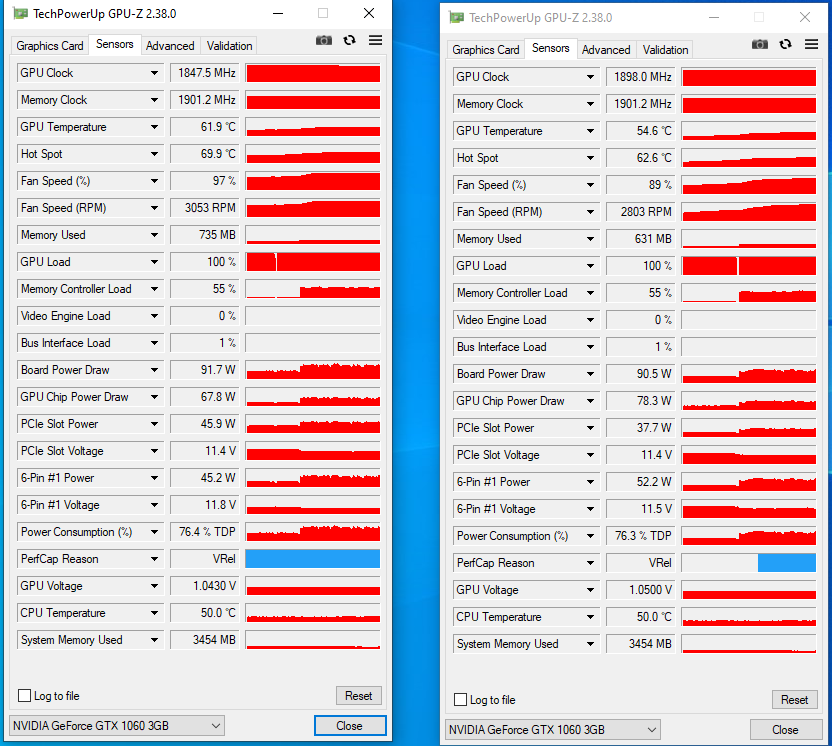

Once you notice it's changed, you then know where the 15mhz increment is and can adjust in 15mhz increments from then on. If not, increase by 5mhz again and re-check. If you're overclocking, you increment by say 5mhz, and see if the core clock has changed. Of note: Core clocks adjust at 15mhz increments. Reducing the clocks can lead to the power reduction it needs to avoid drawing more than it is rated for which can in turn help reduce the risk of throttling or overheating. Reducing power to a component without reducing it's clocks can lead to artifacts or crashing.

The card has to balance power amongst the core as well as VRAM. (With ETH though, you can lower the core clock quite significantly, which will open up some power budget which can be used towards pushing VRAM clocks - the same can apply to games, but the performance loss from significantly slower core clocks will usually hurt FPS significantly). That makes heavy use of VRAM, and the faster you can make that go, the better hashrate/performance you're going to have as long as you're not thermally throttling or hitting a power limit. Mining ETH is a perfect example of GPU temperature not being the only factor. To put some perspective on that, it's the equivalent of running 3DMark2001 SE on a GTX580 when that was considered one of the fastest cards on the market. It's from a time when the GTX780 was considered a top of the range card and 3GB of memory was considered suitable for running any game on the market at that time. Heaven benchmark was built quite a few years ago (2.0 was released in 2010, and version 4.0 was released in 2013). It’s very possible it’s thermal throttling.This would be my thought as well, though power limit would also be a considerable factor, and perhaps it's the main factor. The vram on these cards gets insanely hot when you’re running around 80C.


 0 kommentar(er)
0 kommentar(er)
